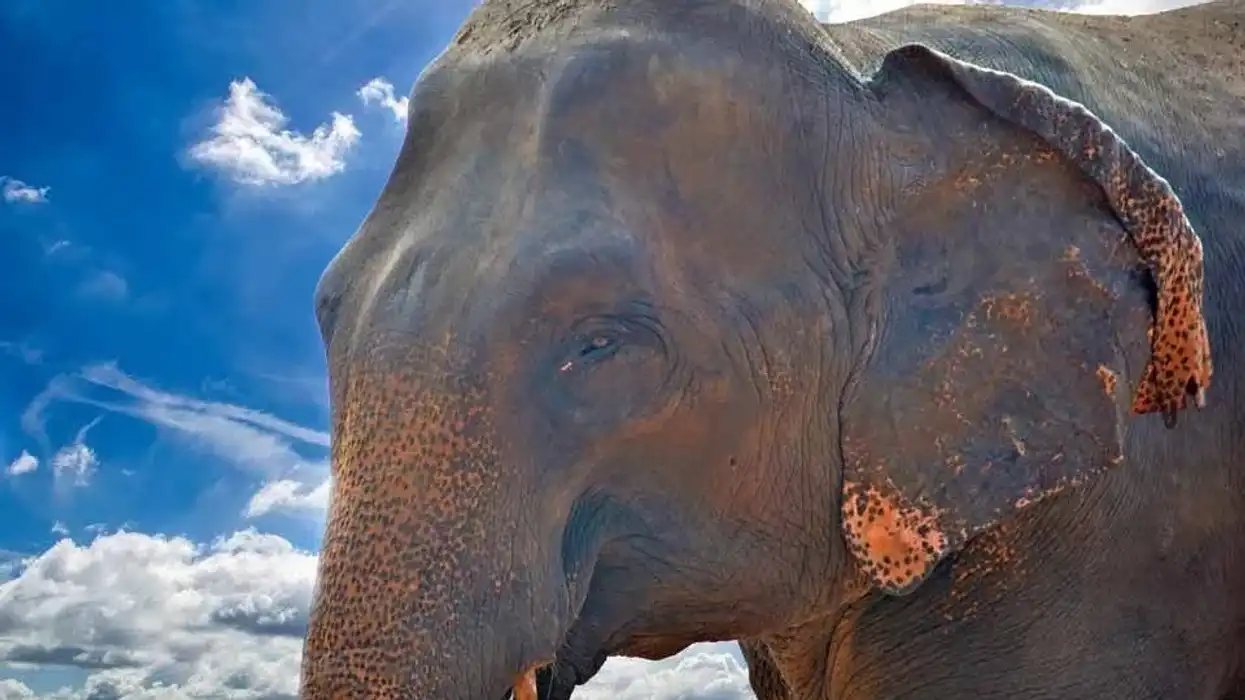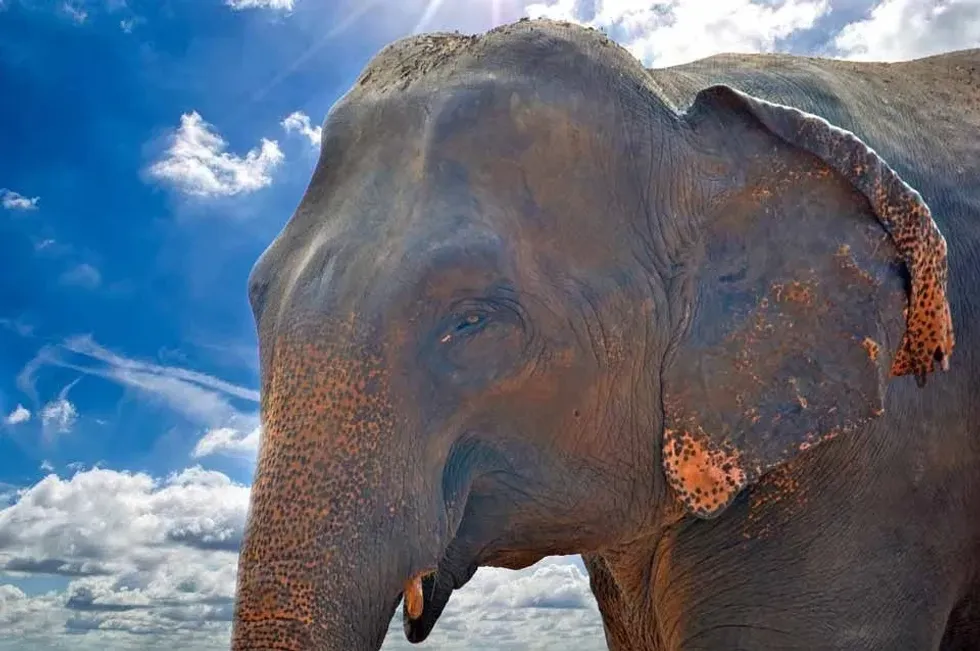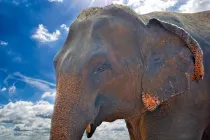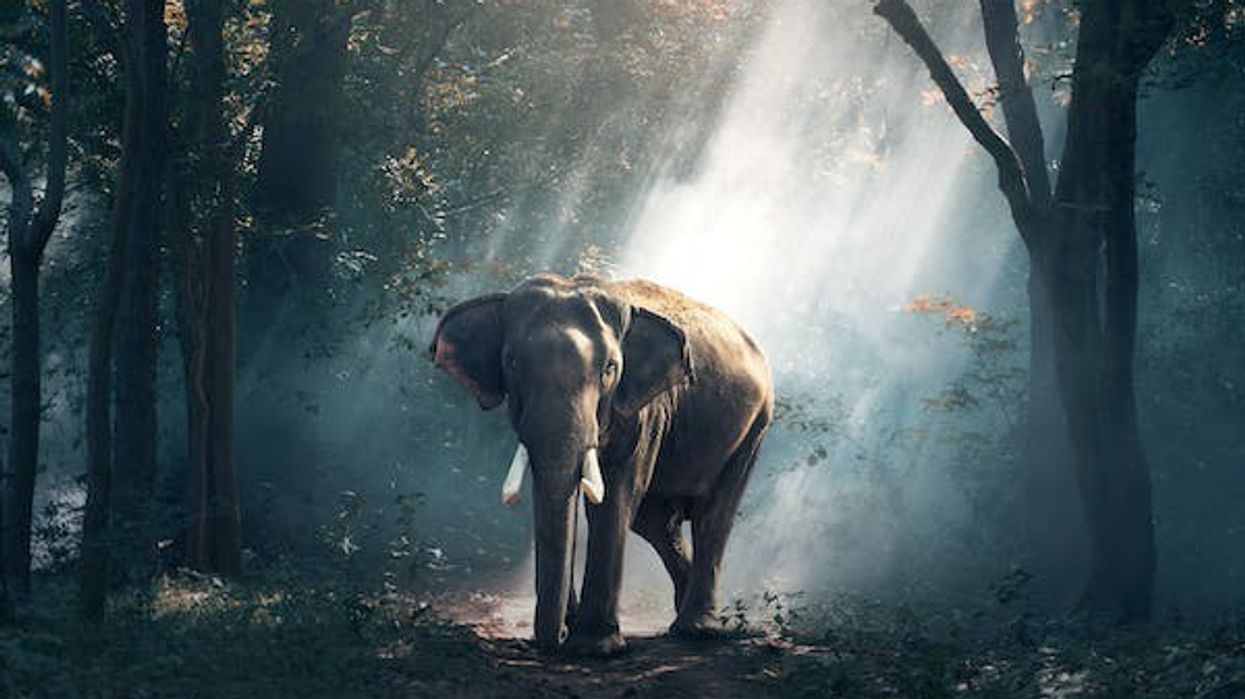Fun Asian Elephant Facts For Kids
If you are interested in reading about unique mammals, then you will love to read about the Asian Elephant. These Asian Elephants are spotted in the southeastern part of Asia and in India and have four subspecies.
They are the Sri Lankan Elephant (Elephas maximus maximus), Indian Elephant (Elephas maximus indicus), Borneo Elephant (Elephas maximus borneensis), and the Sumatran Elephant (Elephas maximus sumatranus).
The Asian elephant is known for its intelligence and its curved tusk. Once found in abundance throughout the continent as far as China, the human-elephant conflict has largely reduced the population of these elephants.
This human-elephant conflict was mainly due to the international trade of ivory which resulted in the killing of many of these mammals.
Deforestation and clearing of land also lead to the loss of habitat for these mammals along with defragmenting the remaining habitat. However, elephant conservation has kicked into overdrive in these years and efforts are being made to save the species
So, read on for more information on these elephants. For other animal fact files, take a look at the Sumatran elephant and the Borneo elephant.
Asian Elephant Interesting Facts
What type of animal is an Asian elephant?
The Asian elephant (Elephas maximus) is a species of elephant found in the South and Southeast Asia region of India, Sri Lanka, Sumatra, and Borneo.
What class of animal does an Asian elephant belong to?
The Asian elephant belongs to the class of Mammalia or mammals.
How many Asian elephants are there in the world?
According to the World Wildlife Fund and other organizations, the wild Asian elephant population is roughly around 48,323-51,680 individuals. However, apart from these wild Asian elephants, there are a few more who live in captivity around the world.
Where does an Asian elephant live?
Wild Asian elephants live and are generally found in the tropical forests and grasslands of India and Southeast Asia. The Asian elephant habitats' main feature is that they stay around 9800 ft above sea level.
What is an Asian elephant's habitat?
Asian elephant's habitat, as already mentioned, is in the dry or wet tropical forests, shrublands, and grasslands of South and Southeastern Asia.
Although most of them live in the wild, some of them have shown traits of enjoying the wildlife habitat of the forest with fewer grasslands in them. Usually, it can be noticed that the clearing or the intermediate area between the forest and grassland's transition offers various plants that are rich in protein for the wild elephants to eat!
However, many such forest areas where these wild elephants live have been cleared due to human settlements resulting in habitat loss and fragmentation.
Who do Asian elephants live with?
The species of the endangered Asian elephants are known to be very social animals. Much like their close cousins, the African elephants, Asian elephants are matriarchal in nature.
They often travel in groups that contain around six to seven related female Asian elephants with the oldest female Asian elephant being the group leader or matriarch.
It has been observed the female elephants and their calves travel together. However, male Asian elephants do not travel with these related females and are most likely to lead solitary lives or form bachelor groups with other adult males on a temporary basis.
How long does an Asian elephant live?
There are varying reports on the lifespan of Asian elephants.
They are supposed to live up to 60 years of age in the wild, however, when they are held in captivity there are conflicting reports regarding their longevity.
Some reports say that Asian Elephants can live up to 80 years in the wild amongst the wildlife, while others suggest that they die way earlier than this in captivity.
The latter is supported by the fact that many of these elephant populations, like their African counterparts, have a high death rate and low birth rate in zoos around the world.
In the African vs Asian elephant debate, it can be seen that African elephants live a bit longer amongst the forest wildlife with a lifespan of 60 to 70 years.
How do they reproduce?
The reproduction process gets off to an aggressive and violent start with the males of this species fighting amongst themselves for the mating right.
Males are known to reach their reproductive maturity between the age range of 12 to 15 and once they reach sexual maturity, they have an annual physiological phenomenon called 'musth' until about the age of 20.
Buoyed on by hormones and pheromones, these endangered elephants become aggressive towards their own gender for mating rights.
For females, the gestation or pregnancy period of around 22 months is the longest amongst any mammals or animals that are known to humans. The female Asian elephant will usually give birth to one baby elephant with litter size occasionally being two.
The mother and the other females in the group take care of the baby. The female does not breed again until the new baby is weaned. As the process of weaning takes around three years, females breed at a gap of four to five years.
What is their conservation status?
According to the International Union For Conservation Of Nature Red List (IUCN), for the Asian elephant, Endangered species is its conservation status. While the Indian and Sri Lankan Asian elephants are marked as Endangered species, the Sumantran Asian elephant conservation status is Critically Endangered.
This is largely due to the human-elephant conflict that includes poaching for ivory leading to an international trade network and disruption of migration routes. However, many steps have been taken for elephant conservation.
Asian Elephant Fun Facts
What do Asian elephants look like?
Asian elephants have distinct features that distinguish them from African elephants. The back of the Asian elephants is usually level or convex-shaped.
The forehead of these elephants distinctly has two domed-shaped bulges. Asian elephant ears are noticed to be smaller in comparison to their African cousins and are folded laterally. These elephants from Asia also have 40 ribs (20 pairs) and 38 vertebrae.
The skin of the elephant can range from being paper-thin in some places to being as thick as one inch in other places. They are usually greyish in color but have patches of pink skin near their ears and heads, which are just signs of depigmentation. However, the skin is very sensitive due to millions of nerve endings.
Now we come to the Asian elephant tusk. These tusks are either curved to the left or curved to the right. This is different from the extinct Asian straight-tusked elephant species. Males usually have tusks while females don't.
Even if the female does have them, they are hidden and generally called 'tushes'. The tusk of these animals ranges from 2 ft - 4 ft with some growing even more. Any elephant tusk has ivory and the Asian elephants are no different.
The Asian elephant trunk, on the other hand, is basically an extension of the upper lip and the nose with the nostril being at the very tip of the trunk.
It has been observed among the Asian elephant populations that for trunks, the Asian elephant range is 59 in - 79 in and varies in different subspecies and due to age!
Also, these elephants that originate from Asia have four nails on the hind legs and five nails on the forelegs.
How cute are they?
Owing to their size and sometimes temperament, these elephants from Asia might be a bit difficult to handle. However, they have features and traits that one might find cute. Baby elephants are usually very playful and many will find them very cute and adorable.
How do they communicate?
Like, other elephants, Asian elephants are known to communicate in the wild by making distinct low and high-frequency sounds. They can also easily communicate between themselves or scare Asian Elephant predators and humans with loud roars, snorts, cries, and barks. They are also known to produce rumbling sounds.
How big is an Asian elephant?
The Asian Elephant size is truly huge. The Asian elephant's height is measured to be around 7ft - 10ft tall while having a body length of 18 ft - 21 ft.
Male elephants of this species grow to be around 9ft - 10ft tall while the female can range between 7 ft - 8ft. The largest ever recorded Asian elephant was a male who measured around 11.3 ft tall and their length from head to tail was recorded to be 26.4 ft.
How fast can an Asian elephant run?
It has been observed that Asian elephants have a surprisingly fast speed range of 15.5 miles per hour. They usually walk around as they spend their days grazing but can run chasing animals or humans in the wildlife.
How much does an Asian elephant weigh?
Asian elephant's weight has been measured by humans to be around 3 to 4.5 tons. The male elephant will measure more on the higher end of the range with the female weighing more on the lower end. The heaviest Asian Elephant to be measured weighed around 7.7 tons.
What are their male and female names of the species?
The male Asian elephant is normally called a bull while the female Asian elephant is called a cow.
What would you call a baby Asian elephant?
Those cute and little baby Asian elephants are called calves. A baby elephant is called a calf until they are grown up, although these elephants reach adulthood at the age of 17 years.
What do they eat?
Being herbivores, the Asian elephant diet is known to consist of plants, shrubs, leaves, and tree bark.
This elephant population is often considered to be megaherbivores and can require up to 330 lb of plant matter every day. These animals are also never far away from a source of water and can drink up to 200 liters of water each day.
One of the Asian elephant adaptations concerning their food habit is that they are crepuscular, meaning they only become active in their forest habitat during the period of twilight.
Are they dangerous?
Owing to their size and strength, it can be concluded that for human settlements and the human population, the Asian elephants can have a certain degree of danger attached to them.
Would they make a good pet?
It is never wise to pluck an elephant from its natural habitat. The highly intelligent Asian elephants are not meant for domesticated lives. While these Asian elephants can be seen in a zoo, they should never be kept as pets.
Did you know...
During the period of 'musth', a male Asian elephant will have around 100 times the testosterone level of the non-musth period.
22 years is the average generational length for Asian elephants.
The Asian Elephants are also known to have 60,000 muscles in their trunks. The trunks can also hold around three to four liters of water in them.
These giant mammals are known to spend up to two-thirds of their day eating leaves and grasses.
What are Asian elephants known for?
Asian elephants are mostly known for their intelligence. The highly intelligent mammal has a brain structure and a developed neocortex that they share only with apes, dolphins, and humans.
It is said that Asian elephants and other elephants are aware of their surrounding, be it the zoo or their natural habitat. They are known to show compassion and grief and can also be seen using tools.
How many species of Asian elephants are there?
There are three species of the Asian elephant with the three being the Indian Asian Elephant found in India, the Sri Lankan Asian Elephant found in Sri Lanka and the Sumatran Asian Elephant found in Sumatra. A fourth subspecies population has also been recognized from Borneo.
Here at Kidadl, we have carefully created lots of interesting family-friendly animal facts for everyone to discover! Learn more about some other mammals including the zonkey and the plains zebra.
You can even occupy yourself at home by drawing one on our Asian elephant coloring pages.
We Want Your Photos!
More for You
See All
Bachelor of Arts specializing in Journalism and Mass Communication, Postgraduate Diploma in Sports Management

Moumita DuttaBachelor of Arts specializing in Journalism and Mass Communication, Postgraduate Diploma in Sports Management
A content writer and editor with a passion for sports, Moumita has honed her skills in producing compelling match reports and stories about sporting heroes. She holds a degree in Journalism and Mass Communication from the Indian Institute of Social Welfare and Business Management, Calcutta University, alongside a postgraduate diploma in Sports Management.
Disclaimer
1) Kidadl is independent and to make our service free to you the reader we are supported by advertising. We hope you love our recommendations for products and services! What we suggest is selected independently by the Kidadl team. If you purchase using the Buy Now button we may earn a small commission. This does not influence our choices. Prices are correct and items are available at the time the article was published but we cannot guarantee that on the time of reading. Please note that Kidadl is a participant in the Amazon Services LLC Associates Program, an affiliate advertising program designed to provide a means for sites to earn advertising fees by advertising and linking to Amazon. We also link to other websites, but are not responsible for their content.
2) At Kidadl, we strive to recommend the very best activities and events. We will always aim to give you accurate information at the date of publication - however, information does change, so it’s important you do your own research, double-check and make the decision that is right for your family. We recognise that not all activities and ideas are appropriate for all children and families or in all circumstances. Our recommended activities are based on age but these are a guide. We recommend that these ideas are used as inspiration, that ideas are undertaken with appropriate adult supervision, and that each adult uses their own discretion and knowledge of their children to consider the safety and suitability. Kidadl cannot accept liability for the execution of these ideas, and parental supervision is advised at all times, as safety is paramount. Anyone using the information provided by Kidadl does so at their own risk and we can not accept liability if things go wrong.
3) Because we are an educational resource, we have quotes and facts about a range of historical and modern figures. We do not endorse the actions of or rhetoric of all the people included in these collections, but we think they are important for growing minds to learn about under the guidance of parents or guardians.







